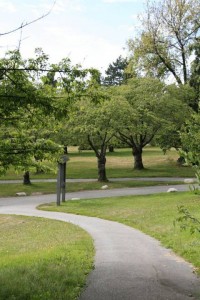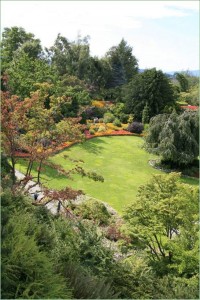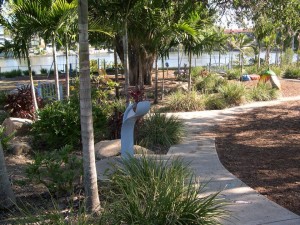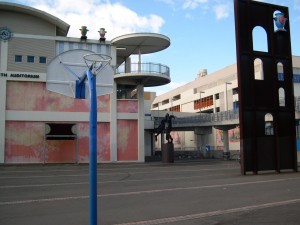Public spaces people love
Remember the last time you visited an urban park or playground?
Did you think they got it right?
Or were you filled with “if only”¦” thoughts: if only there were a shady spot to sit; a place for the smaller children to play; a toilet nearby”¦.
Every year in Australia, billions of private and taxpayer dollars are spent on creating and renovating public spaces. But how far do these dollars go and how long will the projects last?
If spaces don’t make sense and don’t match the needs of the people they are designed for, people, especially children, vote with their feet.
What people need in open space is not a mystery. Sadly, sometimes this seems too much like hard work.
Why is it that so often we seem to miss the right “fit” between the potential users and the spaces designed for them?
Did the designers have up-to-date information about user needs? Was the project brief precise enough about people’s requirements. Were local adults, young people and children consulted?
For example, what use is there in creating a park with a large BBQ area if there are no public toilets nearby?
What about expensive new landscaping in a high-crime neighbourhood that creates instant entrapment or concealment spaces?
What about the brand new “ethnic” park with no challenging or even conventional play equipment and only static “cultural” sculptures and decorations?
People in planning, design, development and government certainly want to make their public spaces successful. It just seems hard and it’s often hard to know where to start.
The jury has been back for a long time. There is lots of valuable information around to guide us: either relevant research or local people can provide specific advice via consultation.
The trick is getting clear about generic user needs at the very start and consulting local people about their specific needs.
When we do this – and even involve local people in building places – the community will help to protect and take care of them because they reflect their values and were designed specifically for them. …trolling through reams of research studies.
A Role for the Social Planner: Inspirational Processes for Inspired Public Spaces
This is where experienced social planners come in: making sense of a myriad of information and providing clear advice about exactly what need to be done.
If we take a closer look at our public spaces – through the critical eyes of the social planner – we can see how people use and modify places.
“Seeing with new eyes” offers clues to what people really need and how future urban spaces should be designed.
I have a wide range of lectures, training formats and workshops available for you to select from which address this critical planning issue.
Here are some examples:
- Young People and Public Spaces:
Why are they treated as though they are unwelcome and what can we do about it?
- Lessons from the “Black Hole”: avoiding problems like this disastrous planned urban space (in inner Sydney) by consulting with local people and delivering realistic benefits
New Public Spaces
therapeutic gardens, culture-specific parks, interactive spaces, community gardens….
Cities and suburbs for children and young people
Some basic questions addressed in my training, workshops and presentations…
- What are the basics of a good park?
- Why are most parks and play areas so disappointing for children?
- Understanding the play needs of children of different ages
- Risk management and exciting children’s play areas: irreconcilable differences?
- Why are we wrapping our kids in bubble wrap?
- What are the consequences of “Nature-deficit Disorder”?
- What makes a child-friendly neighbourhood and a child-friendly city?
- Savvy Cities: what methods can we use when designing our cities for and with young people?
Many projects I have undertaken involve helping people work out how to make parks and public spaces comfortable for local people so that they will use them intensively.
Many user-friendly guidelines — reflecting years of research — can help you create inspirational public spaces. For example, here’s an extract from a consulting report on designing residential areas for children in the middle childhood years (5 to 12):
Extracts from Kidscape, Chapter 1
Want to read more?
To read about high-density housing and what works and doesn’t work, click here: https://sarkissian.com.au/housing-services-by-wendy-sarkissian-phd/evaluating-vancouvers-high-rise-housing
To read about medium-density housing, click here: https://sarkissian.com.au/consulting-services-offered-by-wendy-sarkissian-phd/housing-services-by-wendy-sarkissian-phd/medium-density-housing/
To read about housing for all, click here: https://sarkissian.com.au/consulting-services-offered-by-wendy-sarkissian-phd/housing-services-by-wendy-sarkissian-phd/housing-for-all/
To read about deeper meanings of housing, click here: https://sarkissian.com.au/consulting-services-offered-by-wendy-sarkissian-phd/housing-services-by-wendy-sarkissian-phd/deeper-meanings-of-housing/
How I can help?
I can help you with any or all of the following:
1. Guidance on the needs of different user groups
2. Advice about crime prevention through environmental design (CPTED) and community safety
3. Suggestions about how to engage community members in the planning and design of public spaces
4. Suggestions for user-based evaluations
5. Inspirational lectures, staff development programs, training and workshops
6. Preparation of design briefs and guidelines
7. Moral support and encouragement
8. Advice about how to respond to NIMBY responses from communities.
Not needing any of the above?
I have lots of other ideas and suggestions.
Please contact me at:[email protected] or ring me on 0402 966 284.



